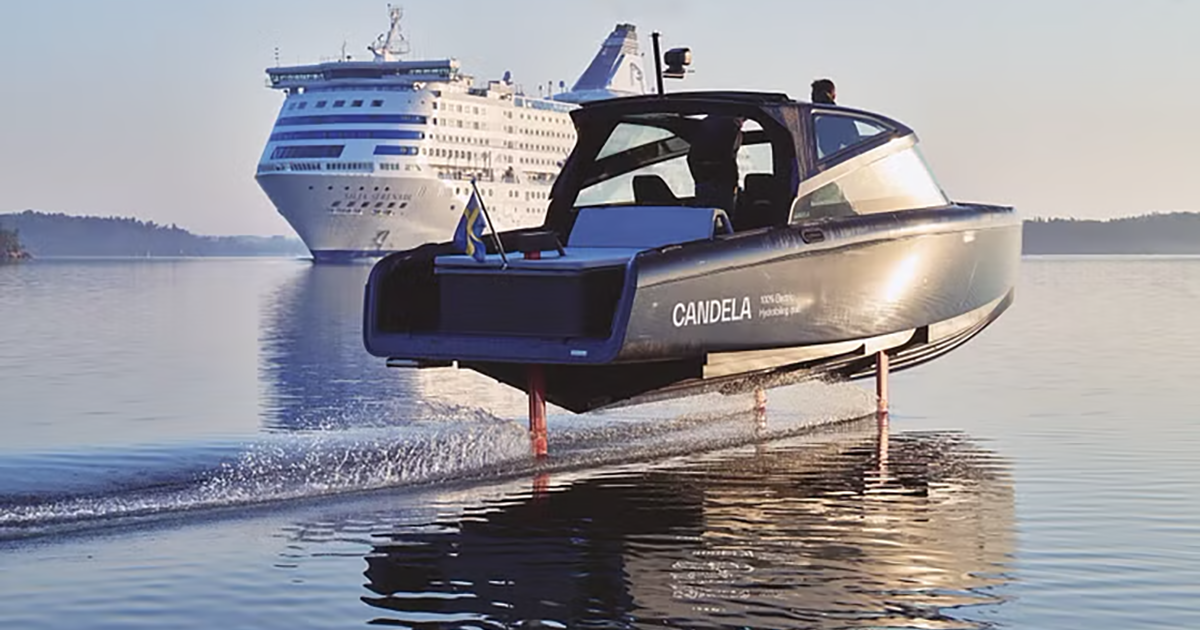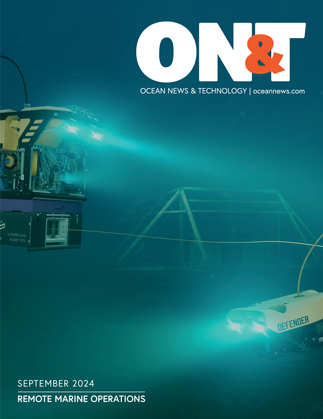“The aim was to demonstrate that zero-emission sea travel is not only possible today, but that foiling electric ships and boats are so much cheaper to operate than fossil-fueled vessels,” said Gustav Hasselskog, CEO and founder of Candela.
The Stockholm-based tech company has developed the world’s first electric hydrofoil boats and ships, vessels that fly above the water with an 80% reduction in energy consumption compared to traditional ships, providing both long-range and high speed on battery power.
The record trip was made with the latest version of the leisure boat Candela C-8, equipped with a Polestar battery, starting at 6 a.m. from Stockholm’s Frihamn. After a charging stop in Kapellskär, they reached Mariehamn, the capital and largest town of the Åland Islands, an autonomous region of Finland, at lunchtime, making it the first electric boat to cross the Baltic Sea between Sweden and Finland. In the harbor, the electric boat pioneers were greeted by a delegation headed by Åland’s Premier, Kristin Sjögren.
“The disadvantage of electric boats has been their short range due to traditional boat hulls consuming so much energy. With our hydrofoil technology, we combine high speed and range, but you get so many other benefits. Flying over the Åland Sea in total silence and without slamming was absolutely magical,” said Gustav Hasselskog.
The trip was made mostly with the existing charging infrastructure and in partnership with Kempower, a charging solutions provider. In Kapellskär, the Candela charged with a Kempower Movable Charger, a 40-kW wheeled charger connected to the existing power grid at the harbor. In Finland’s Mariehamn, the boat was plugged into the marina’s three-phase outlet. In the evening, at 6 p.m., the electric boat pioneers flew back toward Sweden. After a top-up in Kapellskär, the C-8 returned in dense fog to the starting point, Stockholm’s Frihamn, at 11.30 p.m.
“Kempower is proud to contribute to the electrification of boating and help create greener waterways. Electric boats combined with hydrofoiling offer the best possible efficiency. Kempower’s DC fast charging solutions are ideal for electric boating, and our Kempower Movable Charger is a plug-and-play solution that integrates seamlessly with the electrical grids already available in many marinas,” says Antti Vuola, Director of market Segments, Kempower.
“We actually had range anxiety, but not for the Candela. The irony is that the photographer’s gasoline-powered chase boat had to refuel six times during the trip, while we only charged three times,” said Gustav Hasselskog.
Candela’s hydrofoil technology enables massive cost reductions for sea transport, which was proven when the electric costs were summed up. The gasoline-powered chase boat of similar size that accompanied the trip had to refuel for €750 during the 150 nautical miles—while the Candela C-8 consumed 213 kWh of electricity, at a cost of about €40–50.
“We’re talking about 95% lower operating costs. This is a revolution that makes waterborne transöport competitive with land transport in terms of costs, which we will now demonstrate in public transport in Stockholm,” said Gustav Hasselskog.
This fall, Candela P-12, the company’s new 30-passenger hydrofoil ferry, will begin operating the Ekerö-Stockholm City Hall route, where it is expected to halve travel times thanks to not producing damaging wakes, allowing it permission to travel quickly in the inner city.
Candela has recently announced a deal to electrify the water transport network in Saudi Arabia’s giant NEOM project, as well as ferries sold to cities ranging from Berlin to New Zealand.
“We can easily electrify coastal public transport at very low costs, not just in Sweden but across the world. It just requires political will to make the switch,” concludes Gustav Hasselskog.

